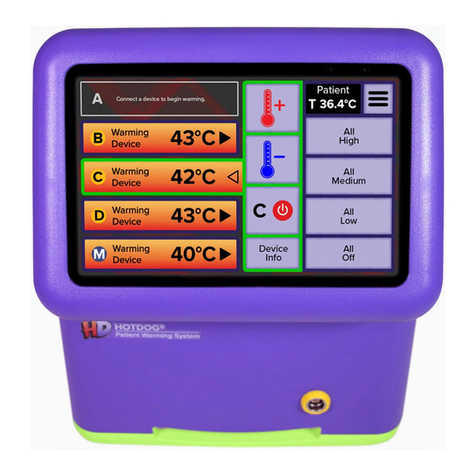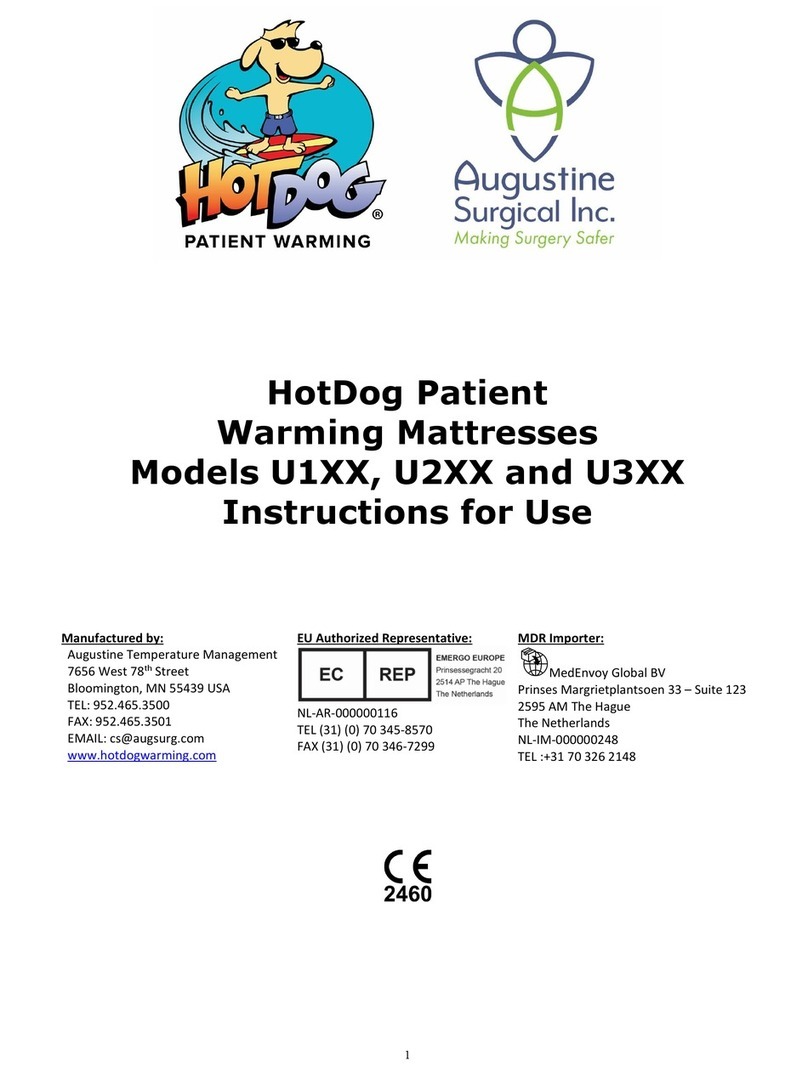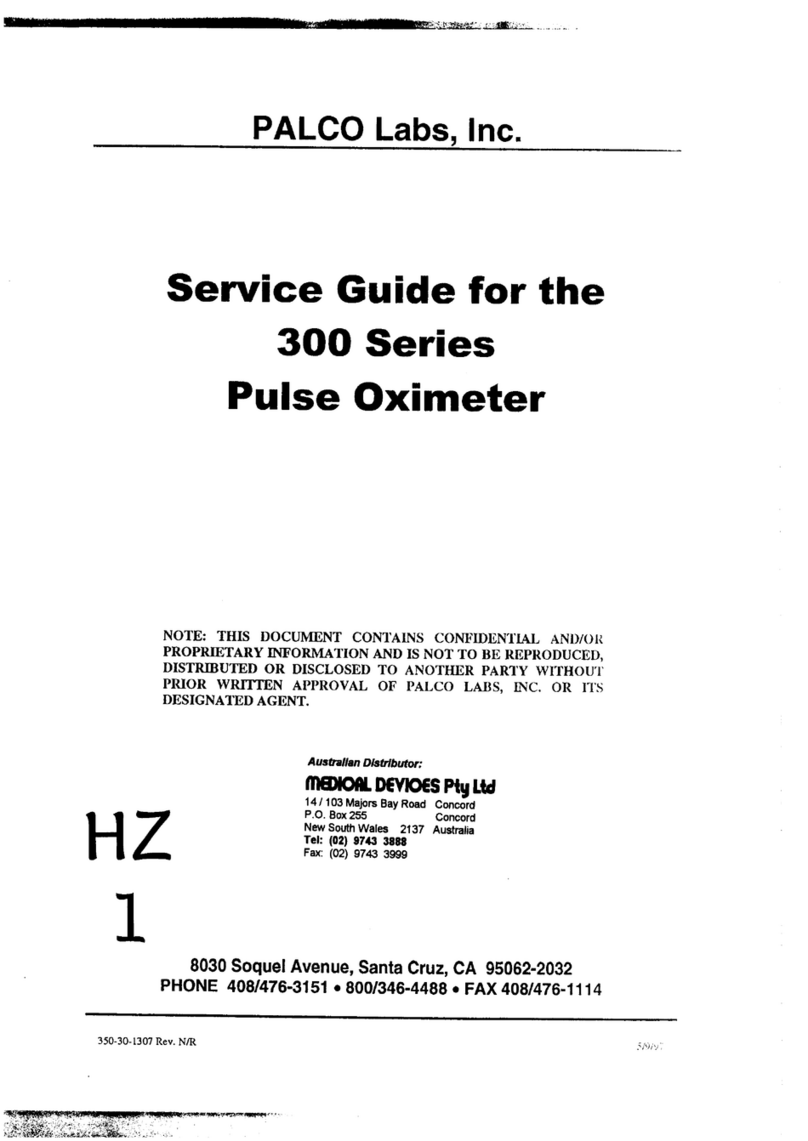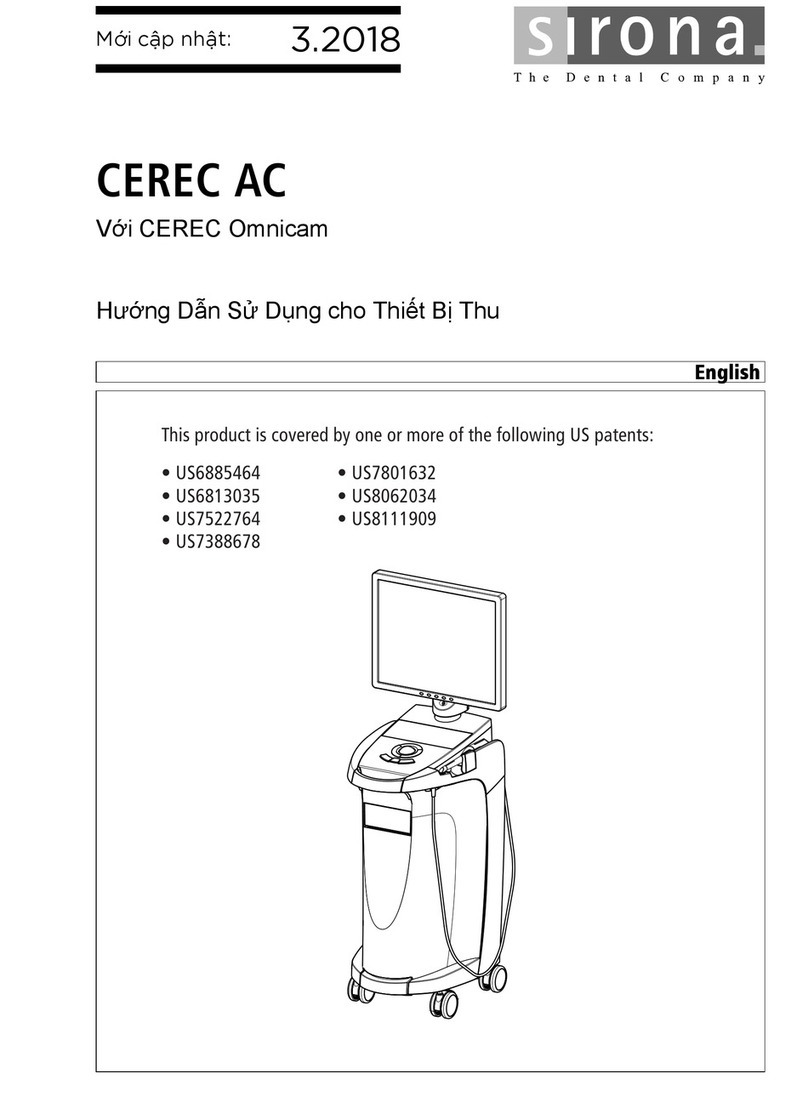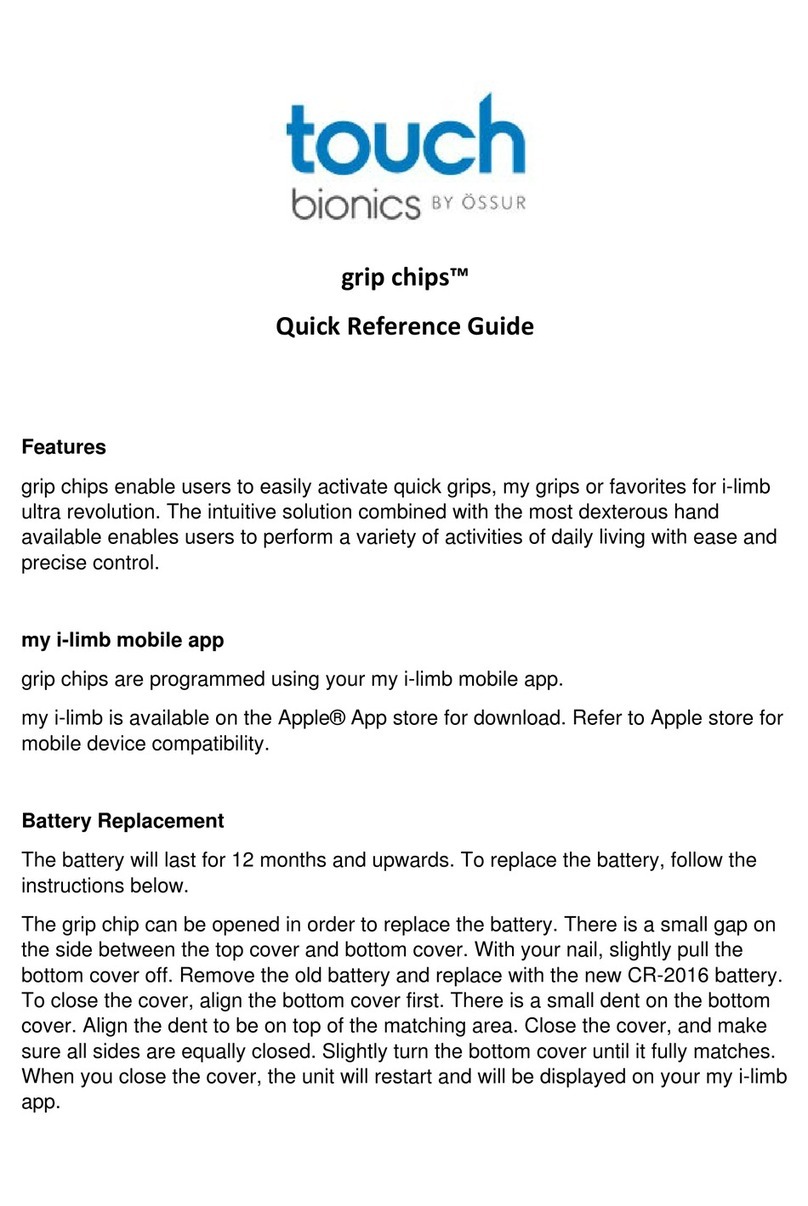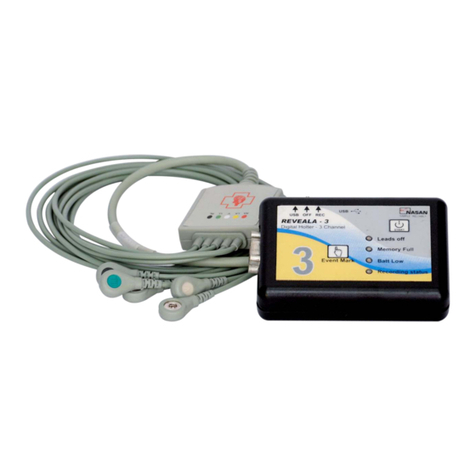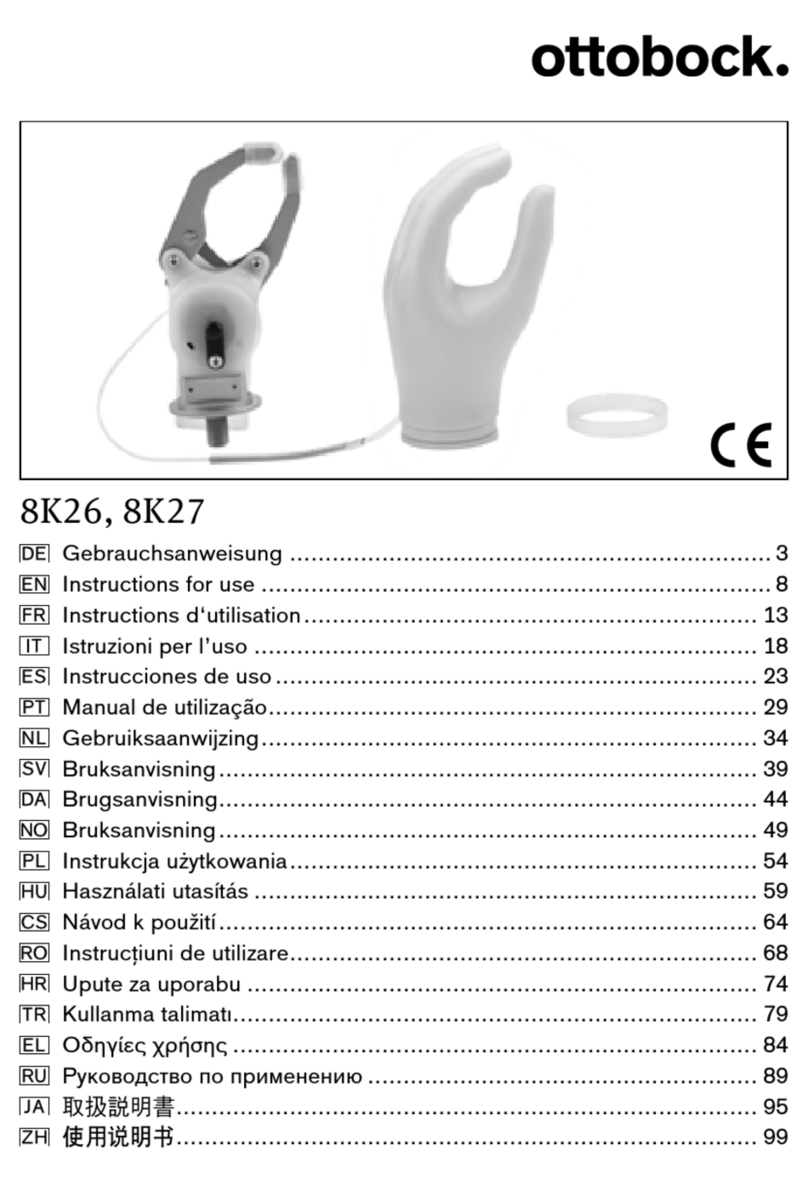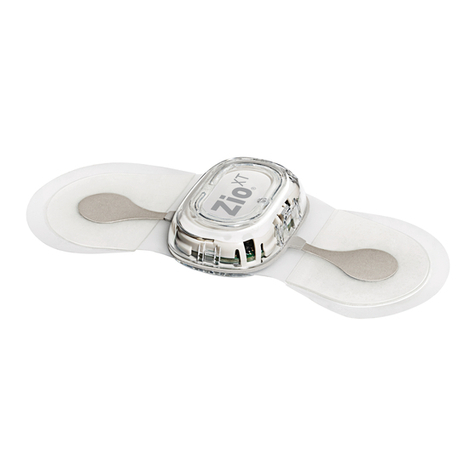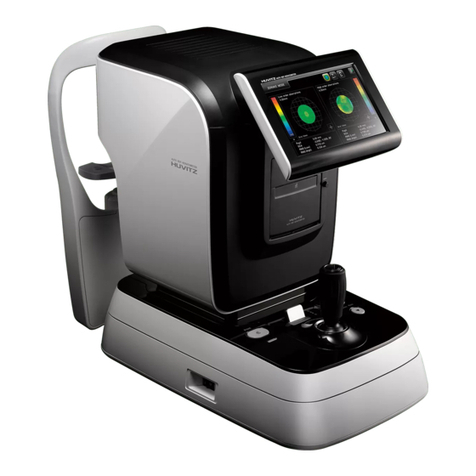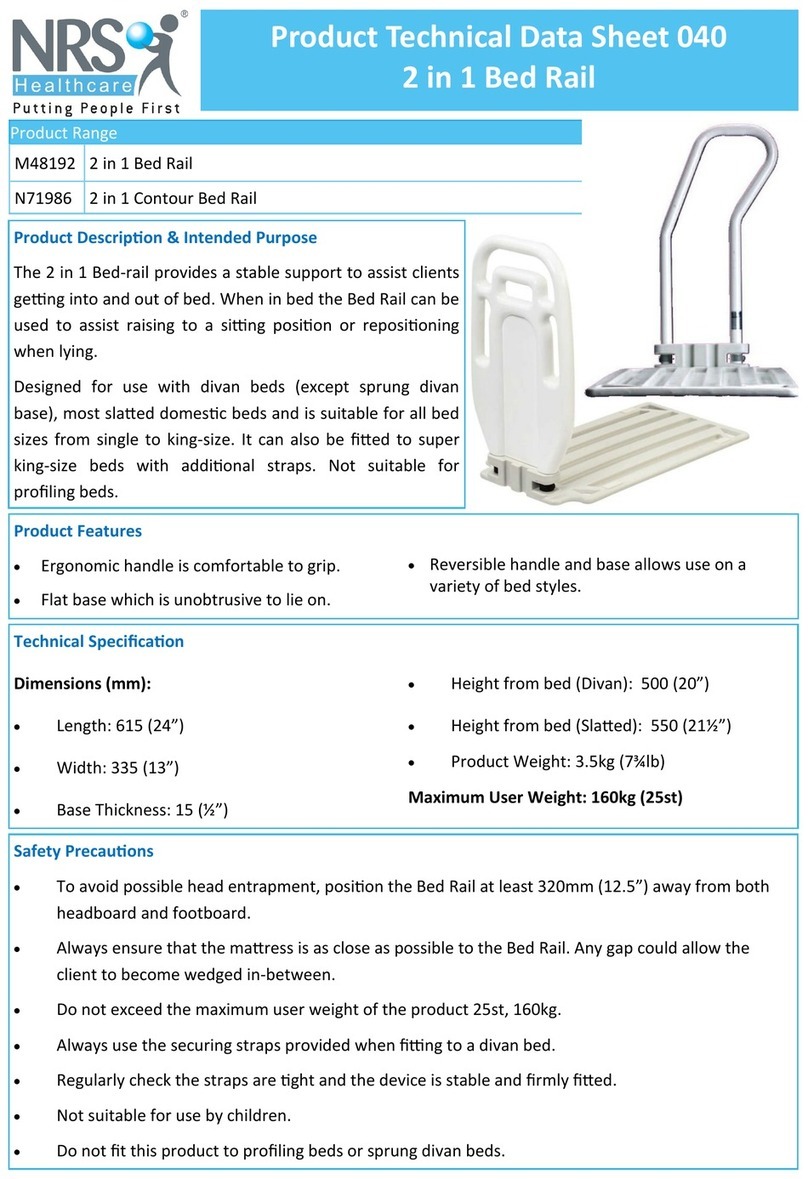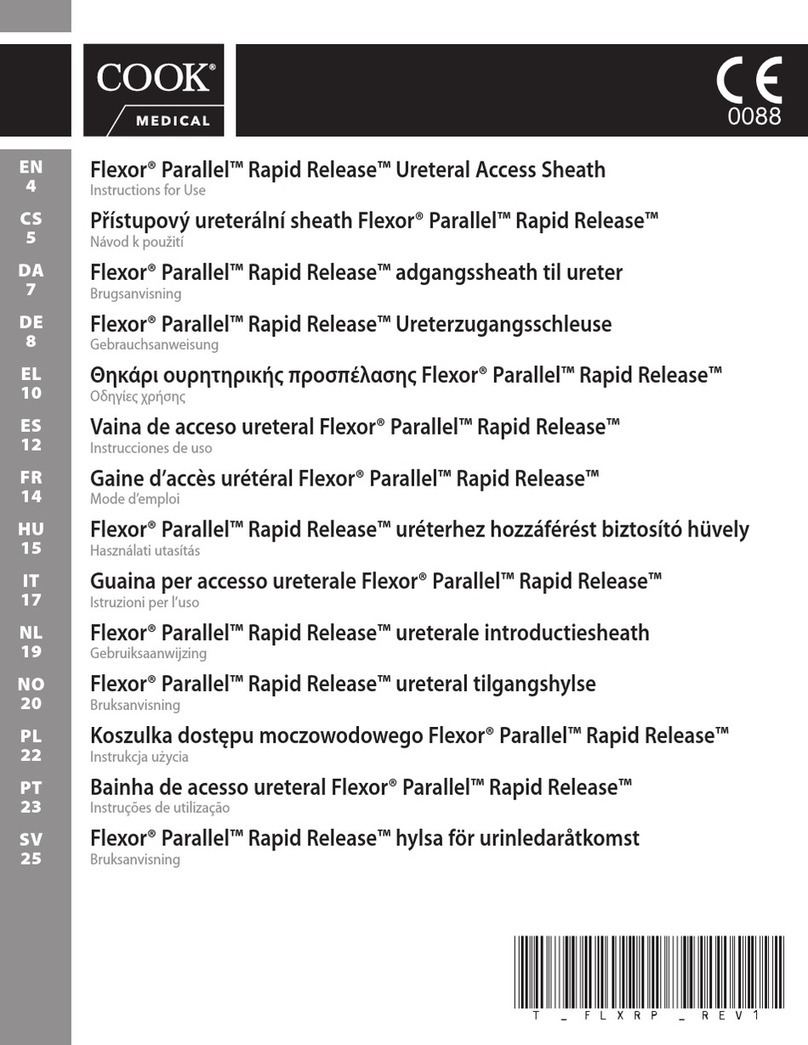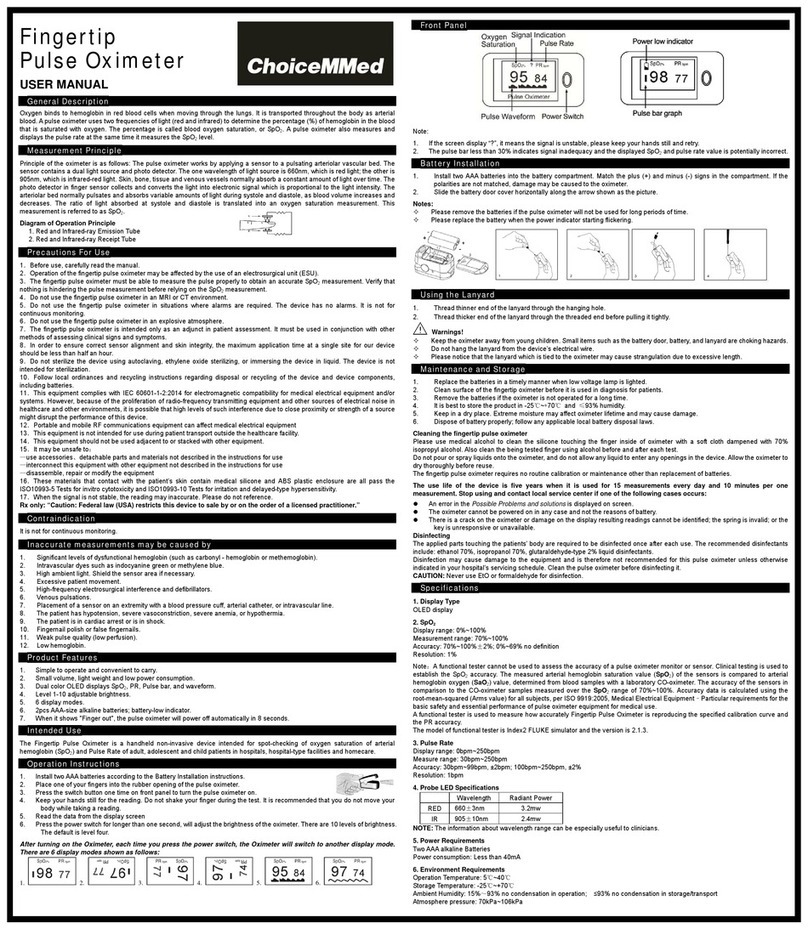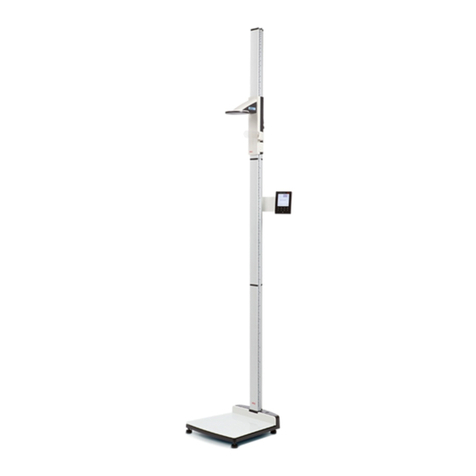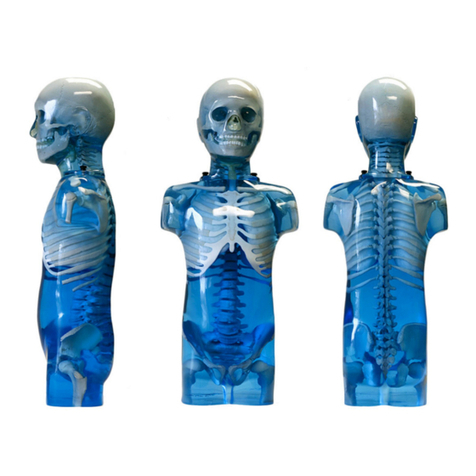Augustine Surgical HotDog B270 User manual

HotDog
Pediatric Head Warming Wraps
Models B270 and B271
Instructions for Use
Manufactured by: EU Authorized Representative: MDR Importer:
Augustine Temperature Management
15305 Minnetonka Blvd
Minnetonka, MN 55345 USA
TEL: 952.465.3500
FAX: 952.465.3501
EMAIL: cs@augsurg.com
www.hotdogwarming.com
Emergo Europe B.V.
Westervoortsedijk 60
6827 AT Arnhem
The Netherlands
NL-AR-000000116
MedEnvoy Global BV
Prinses Margrietplantsoen 33 – Suite 123
2595 AM The Hague
The Netherlands
NL-IM-000000248

Instructions for Use: HotDogTM Pediatric Head Warming Wraps Models B270 & B271 Page 2
INTRODUCTION
HotDog Pediatric Head Warming Wraps are components of the HotDog Temperature Management System. These
instructions apply to the following catalog numbers:
HotDog Product Description Patient Size Catalog Number
Small Pediatric Head Warming Wrap ≤ 8 kg B270
Large Pediatric Head Warming Wrap > 8 kg B271
Cables are available separately.
INDICATIONS FOR USE
The HotDog Temperature Management System is intended to prevent or treat hypothermia and to provide warmth
to patients. The System should be used in circumstances in which patients may not maintain a state of
normothermia. The Pediatric Head Warming Wraps are intended for use with pediatric patients.
The System is intended primarily for use in hospitals and surgical centers including, without limitation, operating
rooms, recovery rooms, emergency rooms, burn units and on other medical/surgical floors.
TARGET PATIENT GROUP
The Pediatric Head Warming Wraps are intended for use with pediatric patients in circumstances in which
patients may not be able to maintain a state of normothermia.
INTENDED USE
The System is designed to compensate for body heat loss before, during, and after surgery, and in other situations
in which patients may not be able to maintain a state of normothermia.
CONTRAINDICATIONS
Do not warm ischemic or non-perfused tissue; thermal injury may result. Examples include tissue distal to
aortic cross clamping, or when vasoconstrictive drugs would lead to severe, prolonged vasoconstriction.
Do not warm patients receiving transdermal medication; increased drug delivery may occur.
WARNINGS
Explosion Hazard – Do not use the HotDog Controller or Pediatric Head Warming Wrap in the presence of
flammable anesthetics or oxygen-enriched environments such as hyperbaric chambers, oxygen tents, etc.
Do not place the heated area of the Pediatric Head Warming Wrap under the patient.
Inspect the Pediatric Head Warming Wrap prior to use for signs of damage or excessive wear such as cuts,
holes, or loose electrical connections. If signs of wear are evident, do not use the Pediatric Head Warming
Wrap until it is inspected by technical staff.
Do not continue to use the Pediatric Head Warming Wrap if the over-temperature indicator and/or alarm
continue to sound after reset.
The Pediatric Head Warming Wrap is not sterile.

Instructions for Use: HotDogTM Pediatric Head Warming Wraps Models B270 & B271 Page 3
California Proposition 65 Warning: The medical devices and products mentioned in this IFU may contain
chemicals including Urethane or PVC, which is known to the State of California to cause cancer, birth
defects, or other reproductive harm. For more information go to, www.p65warnings.ca.gov
CAUTION
Federal law (USA) restricts this device to sale by or on the order of a licensed healthcare professional.
PRECAUTIONS
Use under the direct supervision of a clinician.
Monitor the patient’s vital signs regularly during warming according to institutional protocol. If vital sign
instability occurs, notify the clinician.
Exercise caution to avoid overheating when using multiple warming methods.
Maintain contact between the patient and the labeled sensor on the Pediatric Head Warming Wrap.
Do not fold the Head Warming Wrap black-side to black-side during use, as localized heat build-up may
occur in the overlapped area.
Always use a patient barrier, such as a disposable polypropylene bouffant cap, between the patient and the
Pediatric Head Warming Wrap.
Adjust placement of the Pediatric Head Warming Wrap during X-ray imaging as the white labeling and
internal wiring located primarily along the edges of the Pediatric Head Warming Wrap may appear in
images.
This device should not be disposed of with general waste at end of life. Follow local regulations for
disposal. The device does not pose any potential hazard.
Any serious incident that has occurred in relation to this device should be reported to the manufacturer and
the competent authority of the country in which it occurred.
INSTRUCTIONS FOR USE
1. Select the correct size Pediatric Head Warming Wrap for the patient. Use the B270 for patients 8 kg or
smaller. Use the B271 for pediatric patients weighing more than 8 kg.
2. Inspect the surface of the Pediatric Head Warming Wrap for damage (e.g., cuts, holes, loose electrical
connections). Do not use the Pediatric Head Warming Wrap if it is damaged.
3. Open a polypropylene bouffant cap and apply to the front of the Pediatric Head Warming Wrap so that
it covers the entire Warming Wrap as shown in Figures 1 and 2. It will serve as a thin barrier. Position
the Head Warming Wrap so that the heated portion (black side) will face the patient.
Figures 1 and 2 – Applying the polypropylene bouffant cap

Page 4 Instructions for Use: HotDogTM Pediatric Head Warming Wraps Models 270 & 271
4. Push down the center of the bouffant cap so there is space for the patient’s head. Ensure that the
bouffant cap does not cover access to the controller cable connection. (see Figure 3)
Figure 3
5. Place the Head Warming Wrap around the patient’s head to ensure maximum contact between the wrap
and head. Be sure the sensor is in contact with the patient, as indicated by the white target. Position as
shown in Figure 4.
Figure 4
Warning: Do not place the heated area of the Pediatric Head Warming Wrap under the patient.
6. Adjust both formable edges of the wrap to hold it in the correct position and to ensure maximum patient
contact. If there is extra wrap length, bend the formable edges to position the extra wrap on the
patient’s shoulders, as shown in Figure 5.
Figure 5
7. Alternate Application: You can use Pediatric Head Warming Wraps (B270 and B271) as pediatric
utility blankets. You can still use the same polypropylene bouffant cap as a thin barrier. Be sure that
the black side of the Pediatric Head Warming Wrap is positioned toward the patient with the sensor in
contact with the patient, as indicated by the white target. See Figure 6 for example of placement option
as a pediatric utility blanket.
Figure 6

Page 5 Instructions for Use: HotDogTM Pediatric Head Warming Wraps Models 270 & 271
8. Insert one end of the electrical cable into the appropriate port on the HotDog Controller. Use only with
HotDog controllers.
Controller Model Port
WC0X A
WC5X A or B
WC71 A
WC77 A, B, C or D
9. Insert the other end of the cable into the electrical connector on the Pediatric Head Warming Wrap.
10. Turn the HotDog Controller on and select the desired temperature setting to begin warming. The time
to reach the set-point temperature from 23 C +/-2 C is less than 10 minutes. If the blanket does
not reach the selected temperature within 10 minutes an alarm will sound. (Refer to the HotDog
Controller User Manual.)
11. If the HotDog Controller alarm sounds when the Pediatric Head Warming Wrap is connected, do not
use the Warming Blanket until the alarm condition is resolved. (Refer to the “Alarms” section.)
12. At the conclusion of warming, discard the bouffant cap and clean the Pediatric Head Warming Wrap as
necessary. (See “Care and Maintenance” section below.)
CARE AND MAINTENANCE
Do not continue to use HotDog Pediatric Head Warming Wraps beyond the labeled expiration date, found on
the cable.
Do not launder or sterilize as this may damage the Pediatric Head Warming Wrap.
Do not immerse the Pediatric Head Warming Wrap in liquids.
Do not use high-level disinfectants (e.g. 5lutaraldehyde and peracetic acid) or hydrogen peroxide-based
solutions to clean the Pediatric Head Warming Wrap.
Do not spray cleaning solutions into the electrical connector.
Do not use cleaning or disinfection methods different from those recommended in the Instructions for Use
without first checking with an authorized service representative to ensure that the proposed methods will not
damage the equipment.
Do not use the Pediatric Head Warming Wrap if it shows signs of damage or excessive wear such as cuts,
holes, or loose electrical connectors. Technical staff should perform inspection, such as electrical leakage and
resistance testing, to determine if it is safe for use.
Do not disassemble the Pediatric Head Warming Wrap; the product contains no serviceable parts. If service is
required, call an authorized service representative for assistance.
Do not fold and crease the Pediatric Head Warming Wrap sharply or fold repeatedly in the same location.
Storage
Store the Pediatric Head Warming Wrap in a dry place, folded or on hanging hooks using the designated holes
along the edges of the blanket. Do not allow the Pediatric Head Warming Wrap to be cut or crushed. If folding is
the preferred method of storage, please fold loosely and ideally not always in the same manner. Repetitive

Page 6 Instructions for Use: HotDogTM Pediatric Head Warming Wraps Models 270 & 271
folding, especially if done so in a tight manner, may damage internal components and effect the product’s
longevity.
Cleaning—General
Clean and disinfect the Pediatric Head Warming Wrap between patient uses if it appears visibly soiled. If the
Pediatric Head Warming Wrap is not visibly soiled, disinfection at the end of the operating day is recommended.
Follow protocols for non-critical, non-sterile medical devices that may contact intact skin. Examples of similar
devices include blood pressure cuffs, exam table covers, operating room table pads and surgical supports.
Hydrogen peroxide-based cleaning solutions should NOT be used because the vapors degrade the
conductive fabric heaters.
In general, alcohol-based disinfectants are easiest to use since they are fast-acting and can be sprayed or wiped on
the wrap. Other cleaners that are compatible with the outer surfaces of the wrap include sodium hypochlorite
(diluted bleach), phenolic germicidal detergent, and quaternary ammonium detergent. Iodine-containing cleaners
may cause discoloration of the surface material and are therefore NOT recommended for routine cleaning. Dry
thoroughly before use.
Caution: Do not place the Pediatric Head Warming Wrap in an autoclave, sterilizer, automatic washer-disinfector
or any other high temperature system as this may damage the product.
Cleaning & Disinfection Steps
The cleaning steps below are general recommendations and are not meant to replace hospital-specific cleaning
protocols.
1. Do not allow cleaning fluids to get into the electrical connector.
2. If visible soiling is present, remove before applying a disinfectant. Scrub the affected area with detergent,
using a soft brush or sponge to remove organic matter. Rinse the surface of the wrap using a dampened
cloth. Do not immerse the wrap in liquids.
3. Apply a low- or intermediate-level disinfectant to the entire wrap by spraying or wiping. Follow the
disinfectant manufacturer’s application instructions to ensure disinfection.
4. Dry thoroughly before use.
ALARMS
All alarm conditions are classified as Medium Priority Technical Alarms. If an alarm occurs, unplug the device to
reset the controller. Check the Pediatric Head Warming Wrap and attempt to resolve the alarm. If Alarm Lights
illuminate after a reset was performed, discontinue use and refer the system to Biomedical Engineering. Refer to
Controller IFU for specific information on the Error Codes displayed.

Page 7 Instructions for Use: HotDogTM Pediatric Head Warming Wraps Models 270 & 271
DEFINITION OF SYMBOLS
Do not Place Under
Patient
This side away from the
patient
This side toward the patient
Attention, consult
accompanying
documents.
Natural Latex Free
BF Patient Applied Part according
to IEC60601-1.
Serial Number Reference Number
Lot Number
Manufacture Date Unique Device Identifier Do not submerge
Temperature Sensor Keep Dry
Conforms to European Medical
Device Regulation 2017/745
Transport and Storage
Humidity Range
Transport and Storage
Temperature Range
Separate treatment from general
waste at end of life. See
Precautions for details.
Not Sterile
Protect from sharp objects.
Discontinue use if product is
cut or damaged. EU Authorized Representative
Do not use after YYYY-MM-
DD
Manufacturer
Medical Device restricted to sale by
or on the order of a physician
See IFU for Warnings and
Precautions Medical Device
Consult the electronic
instructions for use on the
website at the URL provided.
MDR Importer
IPX2 Protected against dripping water when tilted up to 15°; Vertically dripping water shall have no harmful effect when the
enclosure is tilted at an angle up to 15° from its normal position. (The Controller)
Medical Equipment Classified by Intertek Testing Services NA Inc. with respect to electric shock, fire, and mechanical hazards
only, in accordance with UL 60601-1. Classified under the European Medical Device Regulation 2017/745 as a Class IIb device.
HotDog is a trademark of Augustine Temperature Management, registered in the U.S. Patent & Trademark Office. Devices are protected
by some or all of the following patents: (US Patents 7,543,344; 7,714,255; 7,851,729; 7,786,408; 8,062,343; 8,283,602; 8,604,391;
8,624,164; 8,772,676; 8,986,359; 9,962,122; 9,668,303; 10,154,543; 10,201,935; 10,206,248; 10,506,668; PCT Patent EP 2,062,460)
.Other patents are pending.
©2024 Augustine Temperature Management, LLC. All rights reserved. P/N 2581EN Rev G (02/2024)
This manual suits for next models
1
Table of contents
Other Augustine Surgical Medical Equipment manuals
Popular Medical Equipment manuals by other brands

GSK
GSK Ventolin quick start guide

Pneumex
Pneumex PneuVibe Pro instructions
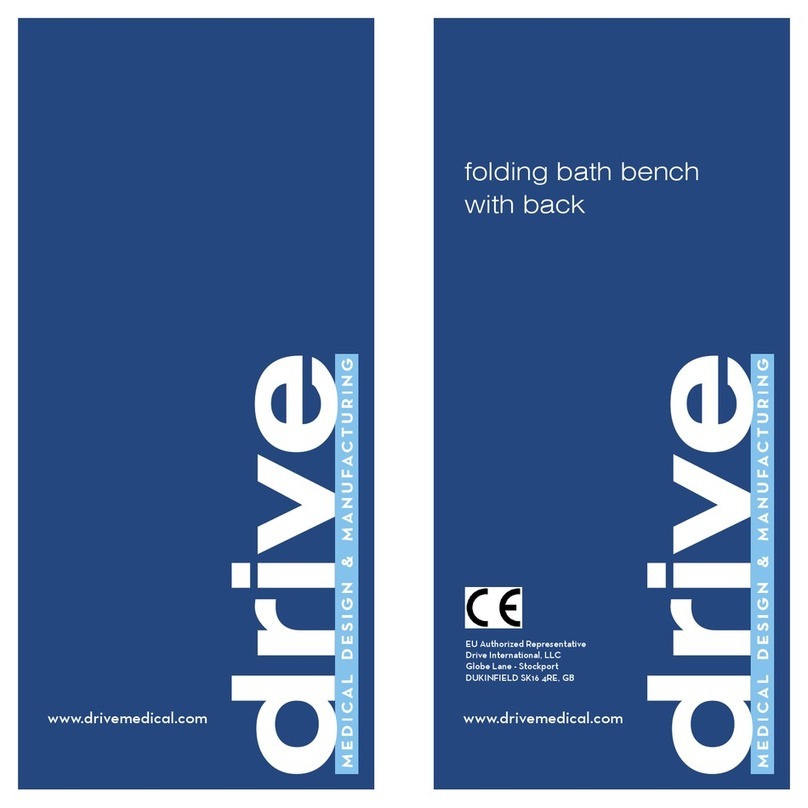
Drive
Drive Folding bath bench with back Assembly instructions
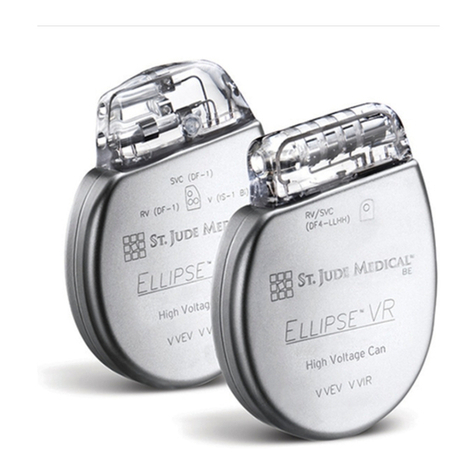
St. Jude Medical
St. Jude Medical Ellipse user manual

NOVA BIOMEDICAL
NOVA BIOMEDICAL Lactate Plus Instructions for use manual

Nidek Medical
Nidek Medical Max 30 3005 Instructions for use
